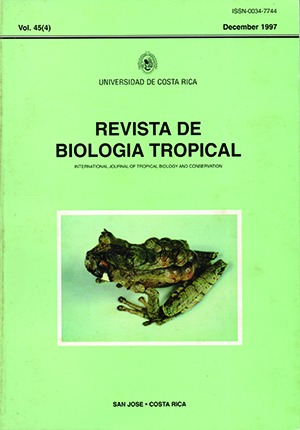Resumen
Reproduction of Triumfetta semitriloba Jacq. (Tiliaceae), a facultatively autogamous tropical shrub weed, was studied in tbree patches of different habitat "quality", in Vicosa, Southeastern Brazil. In each patch ten plants were randomly chosen to collect 25 fruits per plant, during each flowc::ring month (March, April and May) in 1994. Mean seed initiation and seed set, pooling all patches,and flowering months were.2.535 (sd=O.l45) and 1.487 (sd=o.102), respectively (maximum: six seeds per fruit). Mean seed abortion was 41.3%. There was a higher number pf initiated seeds per fruit in one patch, probably caused by differences in patch "quality" and pollinátor abundance, and not by spatial differences on seed abortion, which was not different among patches. Two patches had the same temporal variation (among flowering months) in seed seto The greater brood size during the first and last months was caused by a higher seed initiation on the first flowering month and bigher proportipn of seed abortion on the second month. On the second month there were more flowersJl,er plant, which my lead to a lower rate of cross-polJination and, consequently, lower seed set. The differing patchhad a greater brood size during the first and second months. This pattern could be a . result of a higher seed initiation 'on the first flowering month, or of other patch charíÍcteristics such as lower number of flowers per plant, or lower abundallce of pollinators, especially during the last month, and a high rate of flower predation by beetle species, but not by differencés in seed abortion among months.Comentarios

Esta obra está bajo una licencia internacional Creative Commons Atribución 4.0.
Derechos de autor 1997 Revista de Biología Tropical
Descargas
Los datos de descargas todavía no están disponibles.


